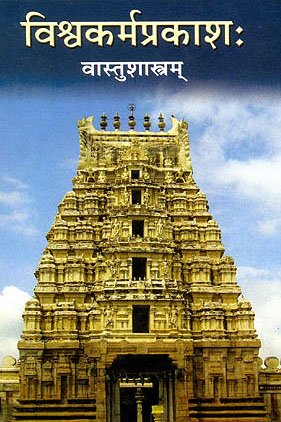Kshitibhushana, Kshiti-bhushana, Kṣitibhūṣaṇa: 1 definition
Introduction:
Kshitibhushana means something in Hinduism, Sanskrit. If you want to know the exact meaning, history, etymology or English translation of this term then check out the descriptions on this page. Add your comment or reference to a book if you want to contribute to this summary article.
The Sanskrit term Kṣitibhūṣaṇa can be transliterated into English as Ksitibhusana or Kshitibhushana, using the IAST transliteration scheme (?).
In Hinduism
Vastushastra (architecture)
Source: Wisdom Library: Vāstu-śāstraKṣitibhūṣaṇa (क्षितिभूषण) refers to a type of temple (prāsāda) classified under the group named Vairāja, according to Samarāṅgaṇasūtradhāra chapter 49. The Vairāja group contains twenty-four out of a sixty-four total prāsādas (temples) classified under five prime vimānas (aerial car/palace), which were created by Brahmā for as many gods (including himself). The group represents temples (e.g. Kṣitibhūṣaṇa) that are to be square shaped. The prāsādas, or ‘temples’, represent the dwelling place of God and are to be built in towns. The Samarāṅgaṇasūtradhāra is an 11th-century encyclopedia dealing with various topics from the Vāstuśāstra.

Vastushastra (वास्तुशास्त्र, vāstuśāstra) refers to the ancient Indian science (shastra) of architecture (vastu), dealing with topics such architecture, sculpture, town-building, fort building and various other constructions. Vastu also deals with the philosophy of the architectural relation with the cosmic universe.
See also (Relevant definitions)
Relevant text
Search found 2 books and stories containing Kshitibhushana, Kshiti-bhushana, Kṣiti-bhūṣaṇa, Ksiti-bhusana, Kṣitibhūṣaṇa, Ksitibhusana; (plurals include: Kshitibhushanas, bhushanas, bhūṣaṇas, bhusanas, Kṣitibhūṣaṇas, Ksitibhusanas). You can also click to the full overview containing English textual excerpts. Below are direct links for the most relevant articles:
Samarangana-sutradhara (Summary) (by D. N. Shukla)
Vastu-shastra (5): Temple Architecture (by D. N. Shukla)